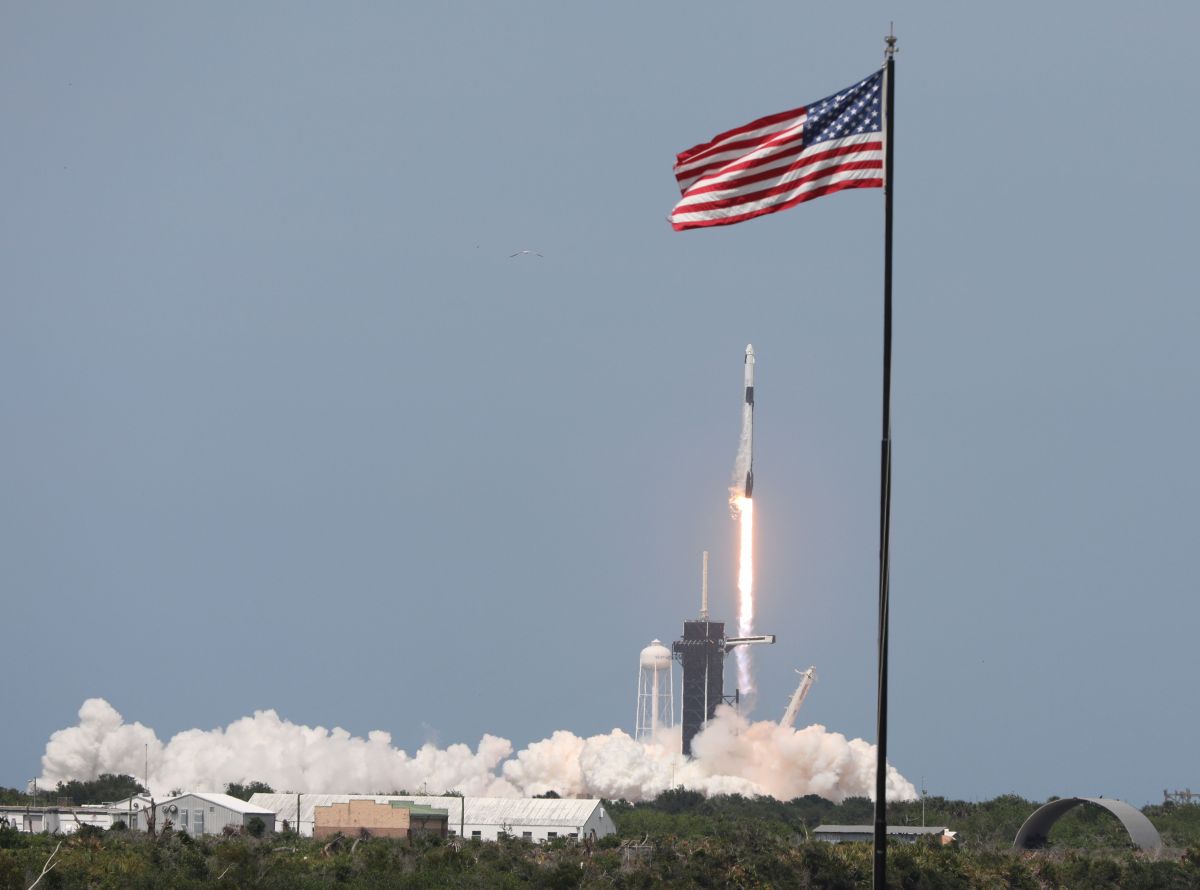As regulators weigh SpaceX’s plans to launch its massive Starship rocket from Kennedy Space Center, federal documents warn those flights could ripple through Florida airspace, forcing ground stops at multiple airports, reroutes, and delays of up to two hours.
Even after launch, reentry of Starship’s two stages could require ground stops at some of the busiest airports in the country, according to a draft environmental impact statement (EIS) released by the Federal Aviation Administration this month.
Florida airports affected by the launches may include Orlando International, Miami International, Tampa International, and Fort Lauderdale/Hollywood International.
Average delays could be as long as 40 minutes to 2 hours for launches and Super Heavy booster landings, and 40 minutes to one hour for Starship reentries. Diversions and cancellations are possible, the FAA said in a companion slide deck.
To manage risk, the FAA would establish Aircraft Hazard Areas (AHAs) over potentially impacted zones, as it does for commercial space launches today. Depending on the Starship flight trajectory, those zones could overlay routes above the Atlantic, parts of the Gulf of Mexico, the Caribbean, and airspace in several Central American countries.
“AHAs may necessitate the closure of dozens of coastal and deep-water oceanic airways over the Atlantic Ocean, requiring substantial aircraft rerouting to avoid the AHAs,” the draft EIS says regarding Starship launches.
Tampa International Airport spokesperson Emily Nipps told TechCrunch the airport has not been involved in any briefings or procedural planning with the FAA or SpaceX, so far. However, a day after TechCrunch sent its inquiries to the relevant airports and the FAA, Nipps said the airport was informed it would be having those discussions “soon.”
Techcrunch event
San Francisco
|
October 27-29, 2025
“Whether that changes anything for us operationally, I don’t yet know,” she said.
A spokesperson for Miami International said they have not received any briefings on possible ground stops.
SpaceX has been launching its flagship Falcon rockets from the Florida coast for years, and that cadence has sharply increased since 2020. Despite launching over 80 Falcon rockets from the Eastern Range last year, these launches don’t typically interrupt commercial airlines. But the Falcon rockets are substantially different from Starship: Falcon’s smaller size means a smaller possible footprint for debris in the case of an anomaly, and the Falcon launches are at this point predictable and mature. Starship is in a much earlier stage of development, with vehicles still occasionally blowing up during both ground tests and orbital flights.
Indeed, the draft EIS notes that the size of airspace closures may vary with each Starship mission, and that it could shrink as the vehicle becomes more reliable.
An FAA spokesperson said the agency has already engaged with aviation organizations, and worked with SpaceX to develop notional launch and reentry trajectories. Prior to launch, the agency will also distribute a final Airspace Management Plan. The FAA relies on a number of factors, including the number of affected passengers, launch window duration, and major holidays when determining when a space launch can proceed, the spokesperson added.
Starship is SpaceX’s next-generation launch system designed for travel to the moon and Mars. The 400-foot-tall rocket is composed of two stages: an upper stage, also called Starship, and a Super Heavy booster. Both stages are designed to be fully reusable and rapidly refurbished for high-cadence satellite delivery and missions to deep space.
Today, SpaceX conducts all Starship launch activities from Starbase in south Texas. But the company is looking to expand operations to NASA’s Kennedy Space Center, prompting the environmental review. That review is conducted by the FAA in cooperation with NASA, the Air Force, the Fish and Wildlife Service, and other federal agencies.
The draft EIS analyzes up to 44 Starship launches per year, which could include up to 44 Super Heavy booster landings and 44 Starship landings. Super Heavy could land back at LC-39A, the launch pad at KSC, on a droneship, or be expended in the Atlantic. Starship landings could likewise occur at the pad, on a ship, or as water splashdowns with recovery in the Atlantic, Pacific, or Indian Oceans.
The FAA said in the draft EIS that while temporary airspace closures may impact commercial airlines and other stakeholders, “mitigation strategies such as pre-coordinated reroutes, dynamic scheduling, and time-based traffic flow management could reduce operational burdens.”
Today, the FAA uses a prototype tool called Space Data Integrator, which ingests real-time flight data from SpaceX and other operators to shrink the amount of time airspace is closed. The regulator says it wants to develop more tools to beef up its situational awareness capability, and each time Starship launches it will get more data on its operations.
The U.S. Space Force is running a parallel environmental review at neighboring Cape Canaveral Space Force Base that analyzes up to 76 annual Starship launches. While the draft EIS for that site states Starship launches would result in airspace closures, it says details of the closures are not yet known because the site is expected to take months to prepare.
We’re always looking to evolve, and by providing some insight into your perspective and feedback into TechCrunch and our coverage and events, you can help us! Fill out this survey to let us know how we’re doing and get the chance to win a prize in return!







